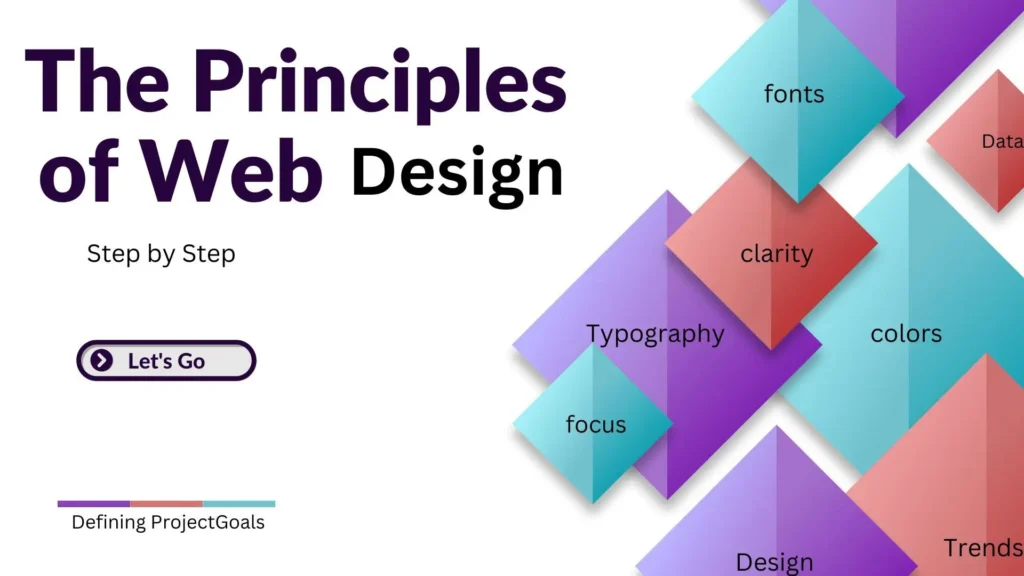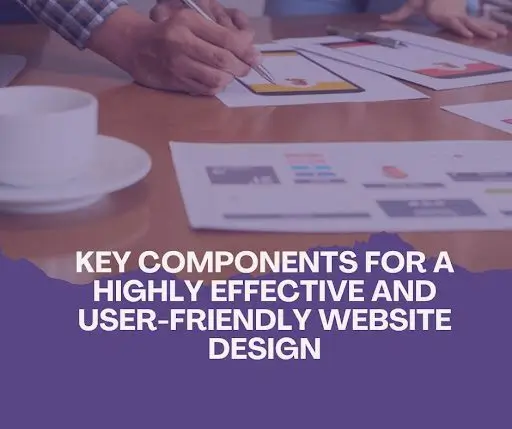Introduction
Welcome to the world of design transformation with our comprehensive guide: “Step-by-Step: Applying Website Design Principles to Projects.” In today’s digital landscape, where every click counts and every scroll shapes perception, a well-designed website emerges as the cornerstone of success. Whether you’re crafting a business platform, presenting a personal portfolio, or establishing an online hub, the systematic application of website design principles is your passport to creating captivating, user-centric experiences. Join us as we navigate through each essential phase, equipping you with the expertise needed to master the art of web design and elevate your projects to new heights.
Step 1: Defining Project Goals and Audience
Every successful design project starts with clearly understanding its goals and target audience. Define the purpose of your website – whether it’s to inform, sell, entertain, or connect. Identify your audience’s preferences, demographics, and behaviors to tailor the design accordingly.
Step 2: Creating an Intuitive Information Architecture
Organize your content logically by creating an information architecture. Visualize the hierarchy of pages and how they will connect. Determine primary navigation menus and categories to ensure users can find information effortlessly.
Step 3: Wireframing for Effective Layout Planning
Wireframes are blueprints for your website’s layout. Sketch out the basic structure of each page, focusing on the arrangement of elements, content placement, and navigation. This step provides a visual guide before diving into detailed design.
Step 4: Selecting Fonts and Typography
Typography greatly impacts the website’s readability and visual appeal. Choose fonts that align with your brand’s personality and are easy to read. Establish font sizes, styles for headings and body text, and maintain consistency throughout the site.
Step 5: Crafting a Harmonious Color Palette

Colors evoke emotions and set the tone for your website. Develop a harmonious color palette that resonates with your brand and content. Ensure the colors complement each other and convey the desired message.
Step 6: Integrating Visual Elements Strategically
Images, illustrations, and icons enhance visual engagement. Select visuals that align with your content and resonate with your audience. Remember to optimize images for web use to maintain site performance.
Step 7: Structuring Layouts with Grid Systems
A well-structured layout guides users through the content seamlessly. Utilize grid systems to create balanced designs that align elements consistently. Grids improve readability and visual coherence.
Step 8: Ensuring Responsive Design Across Devices
With the prevalence of various devices, responsive design is crucial. Ensure your website looks and functions seamlessly on different screen sizes. Use media queries and flexible layouts to adapt to various devices. For more insights into modern web design principles, check out “Modern Web Design Principles for Engagement”.
Step 9: Utilizing Whitespace for Clarity and Focus
Whitespace, or negative space, provides breathing room for content. Embrace it to prevent visual clutter and enhance the user’s focus on essential elements. Whitespace improves readability and overall aesthetics.
Step 10: Guiding Users with Seamless Navigation
Intuitive navigation is essential for a positive user experience. Design user-friendly menus and clear navigation paths. Make it easy for visitors to find what they’re looking for without frustration.
Step 11: Designing Compelling Call to Action (CTAs)
CTAs drive user interactions and conversions. Design visually distinct CTAs that stand out from other elements. Use persuasive language and strategically place them to encourage desired actions.
Step 12: Optimizing Loading Speed for Performance

A fast-loading website is crucial for user satisfaction. Optimize images, minimize code, and utilize caching techniques to improve loading times. A slow website can lead to high bounce rates.
Step 13: Ensuring Accessibility and Inclusivity
Design your website with accessibility in mind. Use semantic HTML, provide alternative text for images, and ensure resizable text options. An inclusive design accommodates all users, including those with disabilities.
Step 14: Testing and Gathering User Feedback
Thoroughly test your website across different browsers, devices, and screen sizes. Seek feedback from colleagues, friends, or potential users. Identify and address any usability issues or design glitches.
Step 15: Iterative Improvement and Refinement
Design is an iterative process. Continuously refine your design based on feedback and insights. Implement changes and enhancements to enhance the user experience and achieve project goals.
Step 16: Analyzing Data for Informed Design Decisions
Integrate analytics tools to track user behavior, page views, and conversions. Analyze data to make informed design decisions. Understand what’s working and what needs improvement.
Step 17: Staying Current with Design Trends
Design trends evolve, and staying updated is essential. Keep an eye on the latest design trends and technologies to ensure your website remains relevant and visually appealing.
By following these step-by-step guidelines, you’ll be equipped to apply website design principles effectively to your projects. A thoughtfully designed website not only enhances user experience but also strengthens your project’s impact and success in the digital realm. Looking to apply these principles to your project? Explore our comprehensive web design services to create stunning and user-friendly digital experiences.
Conclusion
To sum up, mastering the process of applying website design principles is pivotal in today’s digital era. By meticulously following the steps outlined in this guide, you’ll have the tools to craft captivating, user-centered digital experiences. From understanding project objectives to refining design elements, each phase contributes to a seamless and visually pleasing website. Keep in mind that design is an ongoing journey, shaped by user feedback and data insights. With a well-designed website, you elevate user satisfaction and elevate your project’s digital presence. Embrace these principles to create not only a user-friendly site but also a thriving digital venture.







